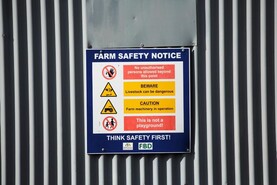Record-breaking winds battered the country last Friday as storm Eowyn swept across the island.
For the first time, the entire island was on red alert throughout the day, with winds of up to 182km/h recorded.
The storm caused significant damage across the country, leaving more than 700,000 homes and businesses without power at one stage.
It also posed problems for Ireland's largest source of renewable power - wind turbines.
Aside from damage to the electricity networks in some areas, which meant the renewable electricity couldn't be exported to the grid, high wind speeds require careful management of wind turbines.
Cut in and out
Wind turbines start operating and generating power when the blade rotation speed reaches between 10km/h and 15km/h.
As wind speeds increase, electricity production also rises until it reaches a threshold known as the rated speed, where the turbine produces its maximum or rated power.
Beyond this point, even as wind speeds continue to increase, the power output remains constant.
Eventually, the turbine reaches a cut-out speed, upwards of 90km/h, and shuts down to prevent excessive strain on the rotor.
Feathering
Every wind turbine is equipped with an anemometer that tracks the wind's direction and speed. In cases of very high winds, the first response is to change the angle of the blades.
This adjustment, sometimes called feathering, allows the blade to catch less of the wind, enabling the turbine blades to continue spinning and generating electricity even as the wind strengthens.
Shut down
If the wind continues to strengthen, it may eventually reach the turbine's cut-out speed. Different makes and models of turbines have varying cut-out speeds, but, at this point, the operator would switch off the turbine for safety reasons.
They would then wait for the wind speed to drop to a point where it can be operated safely again.
Generation
The Island of Ireland has around 5,585MW of installed wind capacity. According to EirGrid, during storm Eowyn, wind generation dropped as low as 579MW/h.
Generation rose to 2,260MW/h by around 7pm that evening. At least one wind turbine in Galway suffered catastrophic failure as a result of the storm.
Scaití, ní bhíonn na muilte gaoithe féin in ann ag an stoirm...tuirbínbar an gCnoc in Indreabhán inniu #eowyn pic.twitter.com/IMacCqdXFc
— Adhmhaidin (@Adhmhaidin) January 24, 2025






 This is a subscriber-only article
This is a subscriber-only article










SHARING OPTIONS: